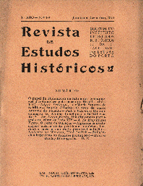

................................
Pedro Vitorino and Damião Peres, in their articles on Numismatics, Epigraphy, Medallic Art and Art History, consider coins, medals, inscriptions and other works of art as historical sources and documents, observing a broadening of the concept. As Pedro Vitorino states: “Those who seek truth as the foundation of history must take advantage of everything.” The author even goes so far as to refer to some urban elements of Porto as “architectural documents”. In his article on medallic art, he uses the concept of “memory”, the memory that was lost after the disappearance of some sacred medals from the 17th century. In another article, the author uses the expression ‘diagnosis’ of an era, a diagnosis that is possible, according to him, through the reading of certain epigraphic elements. In another contribution, this time on the arch of Santo António do Penedo, the professor uses the term ‘oblivion’, induced by the disappearance of some of the city’s architectural heritage.
Another historiographical debate present in this work is raised by Paulo Merêa. The professor questions the fact, defended by authors such as Herculano, António Caetano do Amaral and João Pedro Ribeiro, that Afonso Henriques only began to call himself king after 1140. The academic points out that he has occasionally found a document, dated before the Battle of Ourique, in which Afonso Henriques already called himself king, a fact that does not corroborate the hypothesis put forward by Herculano and his followers, which had never been questioned until then.
Ludovico de Meneses, in his article on the Battle of Ourique, uses the interesting concept of “fiction” to describe this event, which he believes has been exaggerated by the “nonsense of later chronicles”. The author even considers this a “historical problem”, taking the opportunity to question the past and raise a number of plausible hypotheses in areas that cannot yet be proven by documentary evidence. The author contrasts this with the study by Lieutenant Colonel Botelho da Costa Veiga, published in the newspaper O Século on 28 March 1928, criticising the location of the battle indicated by the military officer, as well as the routes to and from the military camp proposed by him. Ludovico de Meneses suggests a more r location for the battle, between the Mértola-Odemira line, the sea, Aljustrel and the Entradas-Mértola line, thus proposing the Lower Alentejo as the scene of the battle.
This work is financed by national funds through FCT - Foundation for Science and Technology, I.P, in the scope of the projects UIDB/04311/2020 and UIDP/04311/2020.
